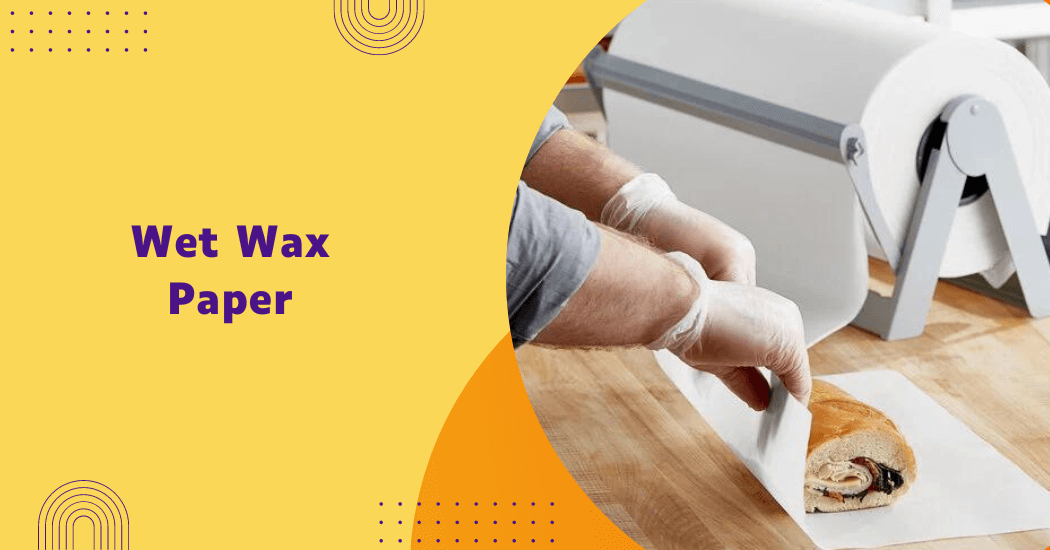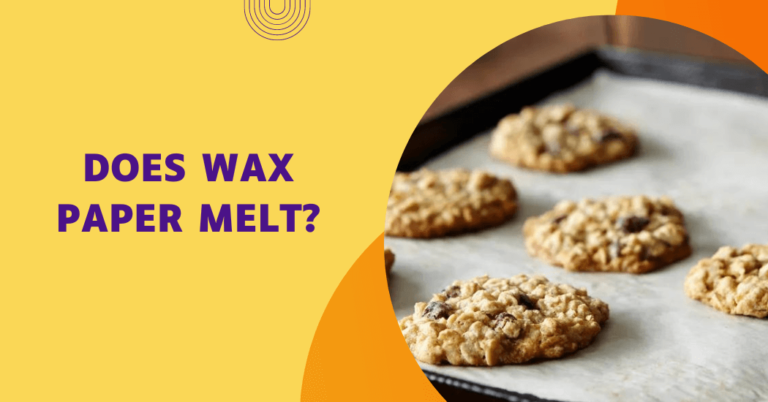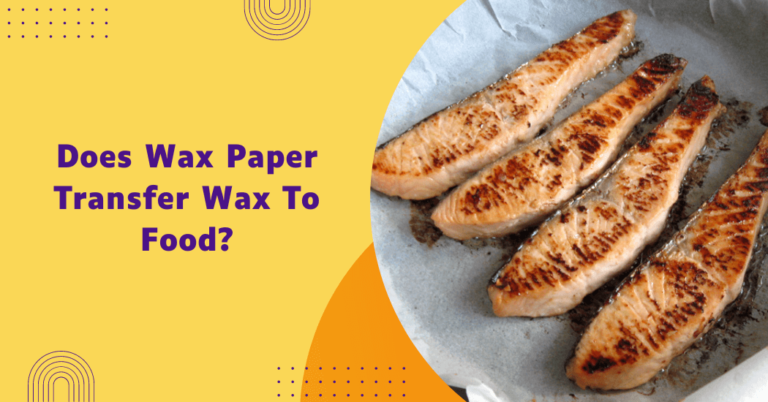What is wet wax paper?
Welcome to our blog post all about wet wax paper. You may have encountered this term while browsing through cooking recipes or handling food products but do you know exactly what it is?
Wet wax paper has been a staple in kitchens and grocery stores for decades, known for its versatile use and ability to keep food fresh.
However, many still wonder what sets it apart from other types of papers and why it’s commonly used in certain applications.
In this post, we’ll dive into the details of wet wax paper from its composition and manufacturing process to its various uses and benefits.
Get ready to uncover the mystery behind this handy kitchen essential!
Wet Wax Paper
Wet wax paper is a type of food packaging material that is coated with wax on both sides. This coating makes the paper resistant to moisture, oil and grease, making it ideal for use in wet or greasy environments without compromising its integrity.
It is commonly made from bleached Kraft paper or unbleached natural brown Kraft paper.
Material Properties
- Composition: Wax paper is typically made from paper coated with paraffin wax or soybean wax. The coating makes it moisture-resistant and non-stick.
- Thickness: The wax coating is usually between 10-15 microns thick.
- Paper Weight: Commonly ranges from 25 to 45 grams per square meter (gsm).
- Barrier Properties: Wet wax paper provides an effective barrier against moisture and grease.
- Moisture Vapor Transmission Rate (MVTR): MVTR values for wax paper can range from 0.2 to 0.5 g/m² per day.
- Grease Resistance: Typically high, often rated around Kit 6 to 12 on the Kit test scale for grease resistance.
Applications
- Food Industry: Used extensively for wrapping food items to prevent moisture loss and sticking.
- Baking and Cooking: Used as a lining for baking trays and pans.
- Storage: Commonly used for wrapping sandwiches, cheese, and other perishables.
- Medical Field: Sometimes used for wrapping sterile instruments or in packaging that requires moisture resistance.
- Industrial Uses: Employed in various manufacturing processes where moisture resistance is critical.
Environmental Impact
- Degradability: Traditional wax paper coated with paraffin wax is not biodegradable.
- Soybean Wax Alternatives: More environmentally friendly options include biodegradable wax paper coated with soybean or other plant-based waxes.
- Recycling: Wax paper is generally not recyclable because the wax coating contaminates the recycling process.
- Composting: Some biodegradable wax papers can be composted under industrial composting conditions.
Market Statistics
- Market Size: Global market for wax paper was valued at approximately USD 1.2 billion in 2021 and is expected to grow at a CAGR of around 4.5% from 2022 to 2028.
- Regional Demand: Major markets include North America, Europe and parts of Asia-Pacific, driven by the food packaging industry.
Manufacturing process
Manufacturing process of wet wax paper starts with the production of a large roll of paper. This paper is then coated on both sides with liquid wax using various methods such as dipping, spraying or roller coating.
Coated paper is then run through a series of rollers to remove any excess wax and create a smooth, even surface. Finally, the paper is cut into sheets or rolls and packaged for distribution.
Properties Of Wet Wax Paper
Wet wax paper possesses several distinct properties that make it suitable for a variety of applications.
Here are some of the key properties:
- Water resistance: Wax coating on both sides of the paper provides an effective barrier against moisture, making it highly water-resistant. This feature helps to maintain the freshness and integrity of wrapped products.
- Grease resistance: Wet wax paper is designed to be grease-proof, preventing oils and fats from penetrating the surface. This makes it ideal for wrapping greasy or oily food items without the risk of leaks.
- Flexibility and strength: Despite its thin and lightweight nature, wet wax paper is remarkably strong and flexible. It can be easily folded, wrapped and manipulated without tearing or breaking.
- Non-stick surface: Wax coating gives the paper a smooth, non-stick surface, which is particularly beneficial in baking and cooking applications. Food items can be easily removed from the paper without sticking or breaking apart.
- Heat resistance: While wet wax paper is not suitable for high-heat applications, it can withstand moderate temperatures typically used in baking and cooking. It can be safely used in refrigerators and freezers without the wax melting or the paper becoming brittle.
- Printability: Wet wax paper can be printed with logos, designs and instructions, making it a popular choice for branded packaging in the food industry. The wax coating ensures that the printed material remains vibrant and clear without smudging.
- Odor neutrality: Paraffin wax used in wet wax paper is nearly odorless, making it suitable for wrapping foods that are sensitive to strong smells. This helps in maintaining the original aroma and flavor of the food.
These properties collectively contribute to the versatility and usefulness of wet wax paper in various settings, particularly in food related applications.
Pros & Cons Wet Wax Paper
Pros of wet wax paper
- Moisture and grease resistance: Wet wax paper’s main advantage is its ability to repel moisture and grease, making it perfect for use in kitchen environments.
- Cost-effective: Wet wax paper is relatively inexpensive compared to other food packaging materials, making it a popular choice among businesses and home cooks alike.
- Versatile: As discussed earlier, wet wax paper has many uses beyond just wrapping food items. Its versatility makes it a valuable addition to any household or commercial setting.
- Kraft Eco-friendly: Paper used in the production of wet wax paper is highly sustainable and biodegradable, making it an environmentally friendly option for packaging and storage needs.
Drawbacks of wet wax paper
- Not suitable for high-heat applications: Wet wax papers are not designed to withstand high heat and may melt or burn if exposed to direct heat sources.
- Limited barrier properties: While wet wax paper is resistant to moisture and grease, it does not provide a complete barrier against them. This means that certain foods with strong odors or high moisture content may still affect the flavor or texture of other foods wrapped in wet wax paper.
- Not recyclable: The wax coating on the paper makes it difficult to recycle, resulting in increased waste and environmental impact. However, some manufacturers offer biodegradable wet wax papers that can be composted after use.
Common Uses Of Wet Wax Paper
Wet wax paper is a versatile and practical material used in various applications, particularly in the food industry.
Here are some of the common uses of wet wax paper explained in detail:
1) Food wrapping and storage
One of the primary uses of wet wax paper is in food wrapping and storage. Its moisture-resistant and grease-proof properties make it ideal for wrapping sandwiches, cheese, meats, baked goods and other food items.
This helps keep the food fresh, prevents it from drying out and minimizes the transfer of strong odors.
2) Baking and cooking
In baking and cooking, wet wax paper serves as a useful tool for lining baking sheets, pans and trays. It prevents food from sticking to the surface and allows for easy cleanup.
Bakers often use it to wrap dough for chilling or freezing, ensuring that the dough retains its moisture and does not stick to other surfaces.
3) Deli and meat packaging
Wet wax paper is extensively used in delis and butcher shops for wrapping fresh meats, poultry and fish.
Wax coating creates a barrier against moisture and juices, ensuring that the packaging stays intact and the product remains fresh during transportation and storage.
4) Candy making
In candy making, wet wax paper is indispensable for wrapping individual pieces of candy such as taffy, caramels and chocolates.
Wax coating prevents the candy from sticking to the paper and helps maintain its shape and texture, while also providing a professional appearance.
5) Crafting and DIY projects
Beyond the kitchen, wet wax paper finds a place in crafting and DIY projects. It is commonly used as a protective layer for work surfaces when working with adhesives, paints or other messy materials. Crafters also use it to create stencils and templates and as a medium for transferring designs.
6) Industrial uses
In industrial settings, wet wax paper is utilized for wrapping metal parts prone to rust or corrosion.
Wax coating shields the metal from moisture and other environmental factors, ensuring the components remain in pristine condition until they are ready to be used.
FAQs – Wet Wax Paper
How is wet wax paper different from regular wax paper?
Wet wax paper has a thicker and more durable wax coating compared to regular wax paper.
It is specifically designed to provide enhanced water and grease resistance, making it suitable for applications where moisture and oil barriers are needed.
Is wet wax paper biodegradable?
Most wet wax papers are not biodegradable due to the paraffin wax used in their coating. However, some manufacturers offer biodegradable options that use alternative wax coatings which can be composted after use.
Can wet wax paper be used in the oven?
Wet wax paper is not suitable for high-heat applications. It can withstand moderate temperatures typically used in baking and cooking but it should not be used directly in the oven at high temperatures.
Can you write or print on wet wax paper?
Yes, wet wax paper can be printed with logos, designs and instructions. The wax coating ensures that the printed material remains clear and vibrant without smudging.
How do you store wet wax paper?
Wet wax paper should be stored in a cool, dry place away from direct sunlight and heat sources to maintain its quality and effectiveness.
Summary
Wet wax paper is a versatile and practical material used in various applications due to its moisture-resistant and grease-proof properties. Its uses range from food packaging and storage to crafting and industrial purposes.
While it has its limitations, the benefits of using wet wax paper outweigh the drawbacks, making it an essential kitchen essential for many households and businesses.
However, it is always important to consider environmentally friendly alternatives and dispose of wet wax paper properly to minimize its impact on the environment.






